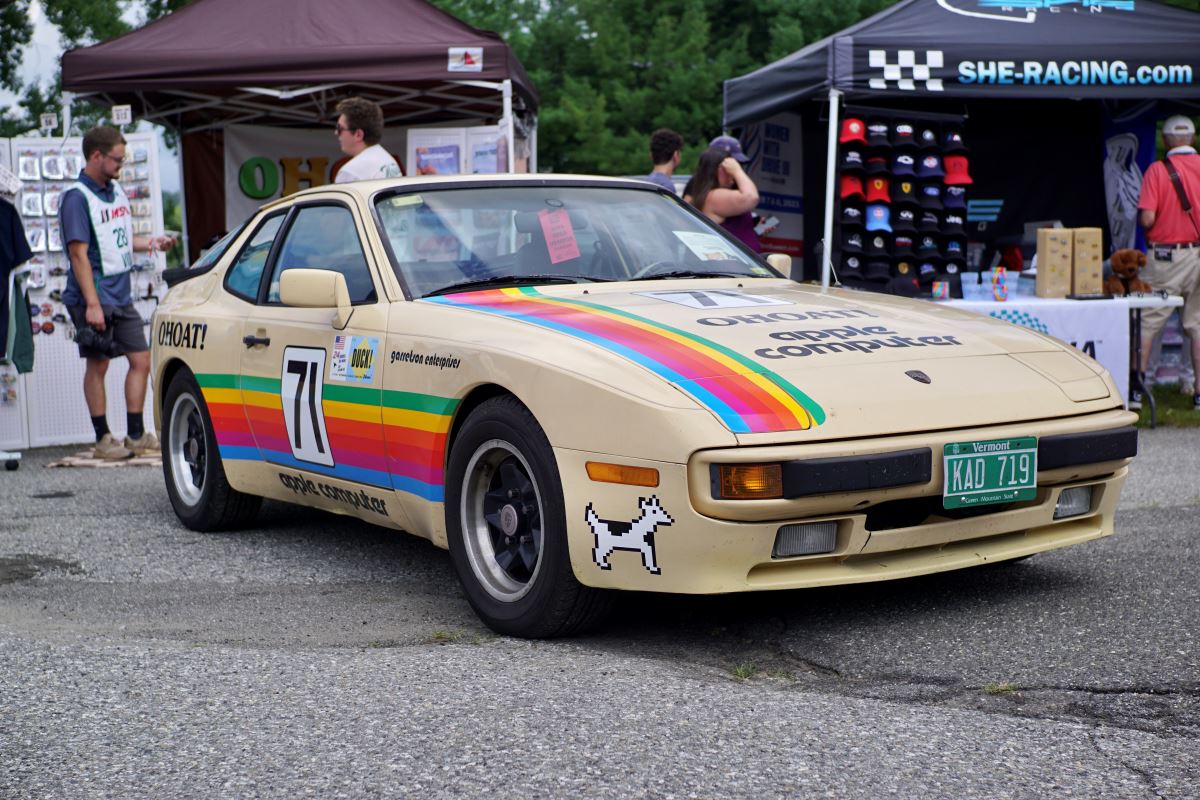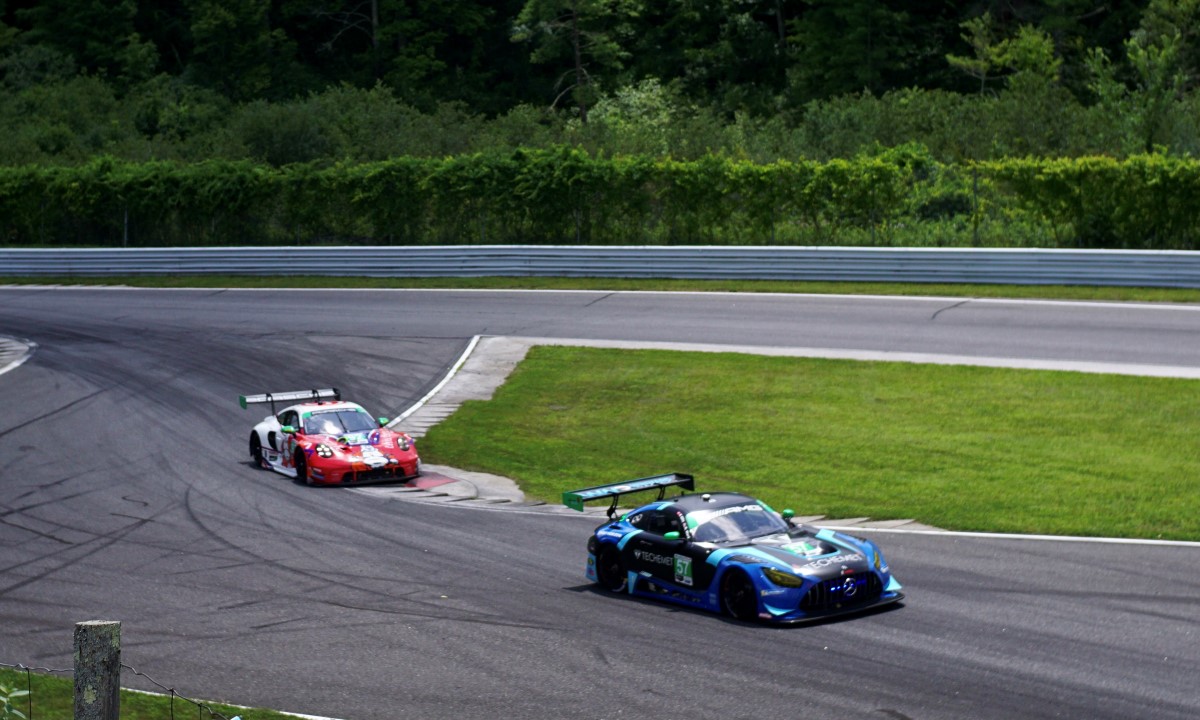
Lime Rock Park Is an Auto Enthusiast’s Dream Race Track
Ask most people what makes a great racetrack, and they’ll talk about overtaking opportunities and quality pavement. But if you spend enough time in the world of racing or even just track days, you’ll come to find that building an icon is about much more than just braking zones and apexes. In a weekend at Lime Rock Park, I discovered why such a small, isolated track is an unstoppable mainstay in a calendar full of much more glamorous locales.
A high-speed island hidden among the hills of Connecticut
On the surface, Lime Rock Park shouldn’t work. It’s a tiny, 1.5-mile road course with only one left-hand turn, a microscopic media center, and little in the way of off-track attractions. The track itself is so small that to add anything other than the 1/5-mile midway, this weekend full of motorsport and automotive themed vendors and a handful of concessions, would mean scaling back on the already-scarce parking and camping areas.
What’s more, this track is at least 45 minutes from any major city. It takes 15 minutes to get to a McDonalds and 20 to find a grocery store. Even the nearest gas station is 8 miles away, making the whole place feel like an island in an ocean of nothingness.
A quintessential New England venue

And in truth, that’s exactly what it is. Nothing about this track is especially convenient. The venue itself is so small that IMSA doesn’t have its top-tier Hypercar division on hand for the event. Those cars are deemed too fast for the compact layout, especially considering the speed discrepancy of running a multi-class race with over a dozen GT cars at the same time.
If you’re looking to be hyper-critical, all of these points are reasons to skip Lime Rock in favor of bigger, more glittering facilities like Daytona, Indianapolis, or Long Beach. But there’s something about the uniqueness of Lime Rock, both in location and the track itself, that makes it a must-see event.
While Daytona has the glitz and glamor of the high banks, 24-hour racing with stunning views of both sunset and sunrise, and the added spectacle of racing through the night, Lime Rock is a short, Saturday afternoon blast around the Connecticut countryside. The historic tradition of Indianapolis, meanwhile, is coupled with an increasingly modernized facility at the hands of automotive and racing giant Roger Penske.
Lime Rock’s history may not be as famous or glamorous but is still storied enough to land the track on the National Register of Historic Places. And it’s a facility that still feels like a throwback in every sense of the word. But, if you’re at all familiar with the quaint charm of New England, the vibe of Lime Rock Park makes all the sense in the world.
The hills are alive with the sound of racecars

Stand atop the hill in the middle of the track and it’s almost easy to forget that you’re at a racetrack at all. Hills surround the facility on all sides, covered in a lush greenery that feels as endless as the unstoppable passage of time. There’s a serenity to it all that is both calming and, if you’re anything like me, a little unnerving.
If not for the parking lot full of cars and campers, you’d never know that this was anything other than a green, tree-lined hill amongst a sea of them.
Then you hear it.
It starts as a low, imperceptible hum if you’re on the backside of the track. Staring over the fence and past the asphalt ahead of you, the sound of the wind through the trees is louder than the impending storm of race fuel and exhaust fumes. But it grows. The pitch noticeably changing from deep and distant to raspy and present.
Then, suddenly, it gets quieter. The first car brakes hard into a sharp right, the off-throttle time momentarily stifling engine noise before jumping back in at full pelt and unleashing the full torrent of sounds and sights that accompany a race car at speed. It’s a sound that envelops you. It hits your ears and your chest at the same time, neither overwhelming separately but together, creating a visceral experience that can never be forgotten. When Alzheimer’s hits and I’m staring into the light, I’ll still remember the sound of that first car, a BMW M4 GT4, ripping past and sending its exhaust note straight into my soul.
Then comes a torrent of race cars. To the left, the pop of rich fuel cuts as cars ascend the hill at full throttle, changing gears with the flick of a paddle. Meanwhile, in your right ear, the descending RPM of a racecar lifting and rolling into a corner, abruptly altered to the raucous tone of a race engine at full throttle as they speed away on exit. In 20 seconds, the whole field has gone past, giving you just enough time to reorient yourself to planet earth before the whole firestorm whips past again.
If you’re into cars, even remotely, it’s an experience well worth the modest price of admission.
Lime Rock Park proves size really doesn’t matter
That’s what makes Lime Rock great. It’s the shortest track on the schedule in a place that nobody would otherwise care to visit. But the rolling hills make the track itself a challenge, and its short layout means there is virtually no stop in the action.
Seeing cars brake at the end of the Paul Newman straight to cut through the chicane at the bottom of the hill is fun if not all that different from most sports car tracks in the world. But watching them try to manage wheelspin when cresting the steep hill before turn 5 is truly a sight. That corner is fast, sweeping, and just tight enough that you can see the cars pitch under braking and then cornering, just kissing the inside curb before getting back to the throttle.
Then comes the most captivating part of the circuit.
Aptly named ‘The Downhill”, it’s a steep descent into a right-hand turn that spits cars out onto the main straightaway. It’s this corner that is among the most unique in America, and it helps discern Lime Rock from the dozens of other race tracks throughout the country.
The Downhill features a descent like the famous Laguna Seca corkscrew but with the type of speed and commitment that makes the Spa Francorchamps’ Eau Rouge and Radillon complex among the most revered sections of race track in the world. At the bottom, the drivers are at full throttle through the tight final curve and all the way down the pit straight on the way back to Big Bend to start it all over again.
Time to focus on the details

Because the track is so compact, there are a lot of laps to analyze what each driver is doing over the course of the race. It’s here where you can truly tell how much skill it takes to drive a race car at the limit without ending up in a guardrail. Whether it’s drivers braking at the ideal point to hit the right line over and over again or someone trying a different sequence to get around a slower car, both the precision and decisiveness of pro-level racing drivers are truly on display at Lime Rock Park.
It’s what makes the track so enjoyable for drivers and spectators alike. And it’s why this tiny, unassuming track just outside of tiny Salisbury, CT is a mainstay on the IMSA calendar year after year. If you’re an auto enthusiast, this is the type of racing you’ll truly appreciate.




